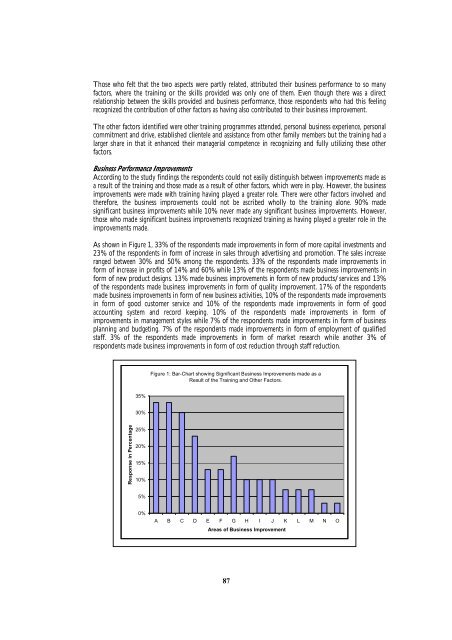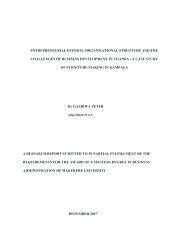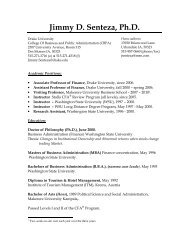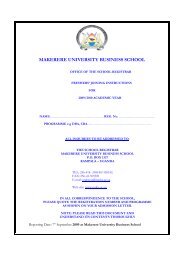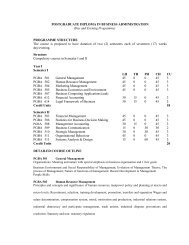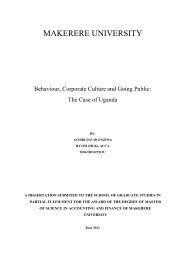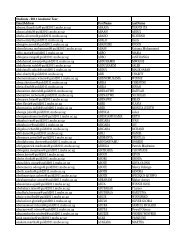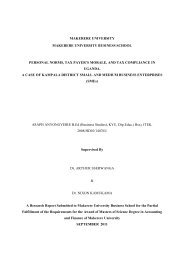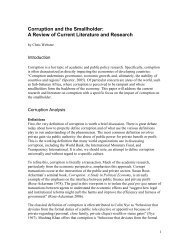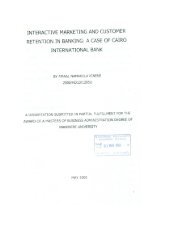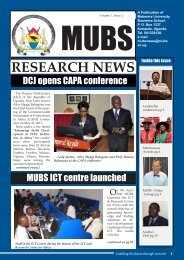13th Annual International Management Conference Proceeding
13th Annual International Management Conference Proceeding
13th Annual International Management Conference Proceeding
You also want an ePaper? Increase the reach of your titles
YUMPU automatically turns print PDFs into web optimized ePapers that Google loves.
Those who felt that the two aspects were partly related, attributed their business performance to so many<br />
factors, where the training or the skills provided was only one of them. Even though there was a direct<br />
relationship between the skills provided and business performance, those respondents who had this feeling<br />
recognized the contribution of other factors as having also contributed to their business improvement.<br />
The other factors identified were other training programmes attended, personal business experience, personal<br />
commitment and drive, established clientele and assistance from other family members but the training had a<br />
larger share in that it enhanced their managerial competence in recognizing and fully utilizing these other<br />
factors.<br />
Business Performance Improvements<br />
According to the study findings the respondents could not easily distinguish between improvements made as<br />
a result of the training and those made as a result of other factors, which were in play. However, the business<br />
improvements were made with training having played a greater role. There were other factors involved and<br />
therefore, the business improvements could not be ascribed wholly to the training alone. 90% made<br />
significant business improvements while 10% never made any significant business improvements. However,<br />
those who made significant business improvements recognized training as having played a greater role in the<br />
improvements made.<br />
As shown in Figure 1, 33% of the respondents made improvements in form of more capital investments and<br />
23% of the respondents in form of increase in sales through advertising and promotion. The sales increase<br />
ranged between 30% and 50% among the respondents. 33% of the respondents made improvements in<br />
form of increase in profits of 14% and 60% while 13% of the respondents made business improvements in<br />
form of new product designs. 13% made business improvements in form of new products/services and 13%<br />
of the respondents made business improvements in form of quality improvement. 17% of the respondents<br />
made business improvements in form of new business activities, 10% of the respondents made improvements<br />
in form of good customer service and 10% of the respondents made improvements in form of good<br />
accounting system and record keeping. 10% of the respondents made improvements in form of<br />
improvements in management styles while 7% of the respondents made improvements in form of business<br />
planning and budgeting. 7% of the respondents made improvements in form of employment of qualified<br />
staff. 3% of the respondents made improvements in form of market research while another 3% of<br />
respondents made business improvements in form of cost reduction through staff reduction.<br />
Response in Percentage<br />
35%<br />
30%<br />
25%<br />
20%<br />
15%<br />
10%<br />
5%<br />
0%<br />
Figure 1: Bar-Chart showing Significant Business Improvements made as a<br />
Result of the Training and Other Factors.<br />
A B C D E F G H I J K L M N O<br />
Areas of Business Improvement<br />
87


